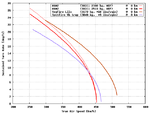Your welcome parsifal and a very interesting read, thanks
Like you I tend to beleive that the RAAF used the wrong doctrine when first fighting the Japanese. As you said they where lead by ETO theater doctrines and not pacific. Aircraft where totally different including conditions. Its been awhile since I researched pacific theater though when I did I found that finding exact numbers of losses on the Japanese side seemed very hard to find.
Part of this was due to the construction of the zero. How many damaged zero's never made it back due to combat damage will probably never be known for sure.
I should go back through the Australian Archives. They did a lot of fighting with the Oscars also but I don't remember seeing any info about them there. Might be worth a search again of the Archives.
Like you I tend to beleive that the RAAF used the wrong doctrine when first fighting the Japanese. As you said they where lead by ETO theater doctrines and not pacific. Aircraft where totally different including conditions. Its been awhile since I researched pacific theater though when I did I found that finding exact numbers of losses on the Japanese side seemed very hard to find.
Part of this was due to the construction of the zero. How many damaged zero's never made it back due to combat damage will probably never be known for sure.
I should go back through the Australian Archives. They did a lot of fighting with the Oscars also but I don't remember seeing any info about them there. Might be worth a search again of the Archives.

